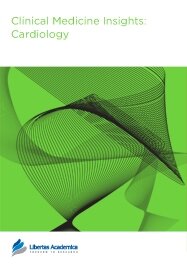

Publication Date: 11 Aug 2013
Type: Review
Journal: Clinical Medicine Insights: Cardiology
Citation: Clinical Medicine Insights: Cardiology 2013:7 127-140
doi: 10.4137/CMC.S8445

Atrial fibrillation remains the most common arrhythmia in clinical practice. Dronedarone is an antiarrhythmic drug for the maintenance of sinus rhythm in patients with atrial fibrillation. Dronedarone is an amiodarone derivative developed to reduce the number of extracardiovascular side effects. Dronedarone has undergone extensive experimental and clinical testing during the last decade. On the aggregate, these studies have highlighted a complex set of pleiotropic actions that may contribute to dronedarone’s antiarrhythmic effects. In this review, we summarize the clinical studies that have evaluated dronedarone and provide an overview of dronedarone's electrophysiological and nonelectrophysiological pleiotropic actions.
PDF (1.68 MB PDF FORMAT)
RIS citation (ENDNOTE, REFERENCE MANAGER, PROCITE, REFWORKS)
BibTex citation (BIBDESK, LATEX)
XML
PMC HTML

I am impressed by the efficiency at each step of submission in the journal. Based on the first-hand experience, I am confident that this journal will have a great future, and the impact factor will rise rapidly.

All authors are surveyed after their articles are published. Authors are asked to rate their experience in a variety of areas, and their responses help us to monitor our performance. Presented here are their responses in some key areas. No 'poor' or 'very poor' responses were received; these are represented in the 'other' category.See Our Results
Copyright © 2014 Libertas Academica Ltd (except open access articles and accompanying metadata and supplementary files.)
Facebook Google+ Twitter
Pinterest Tumblr YouTube